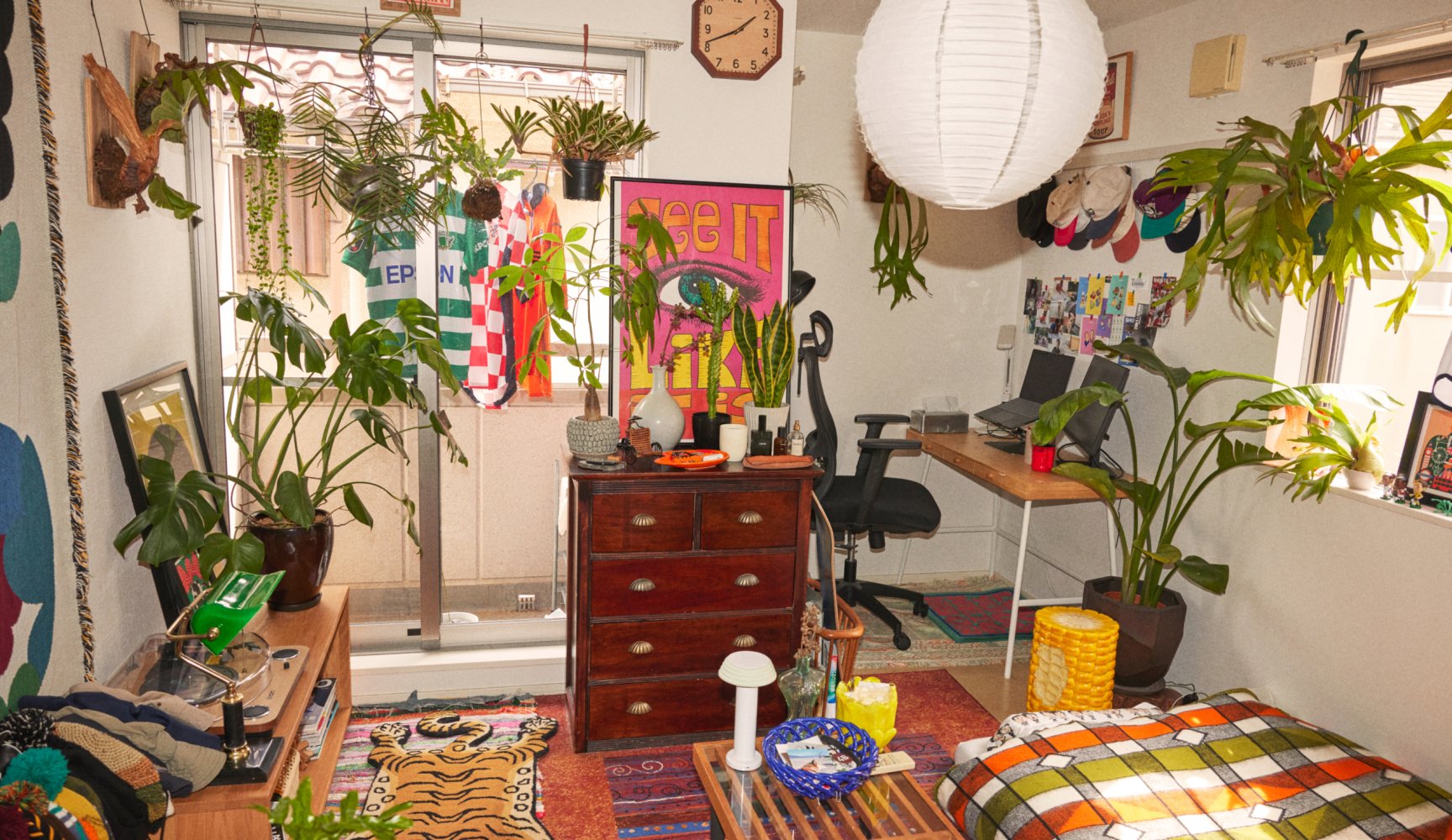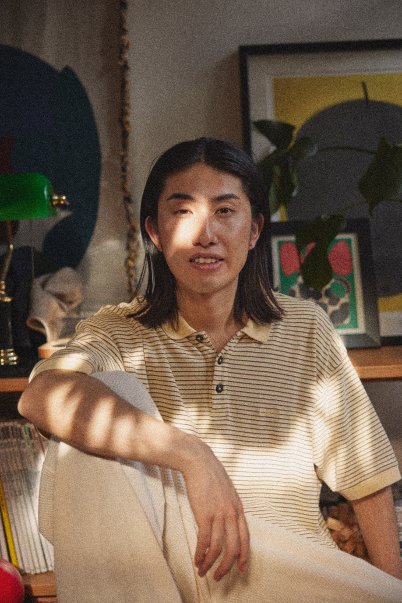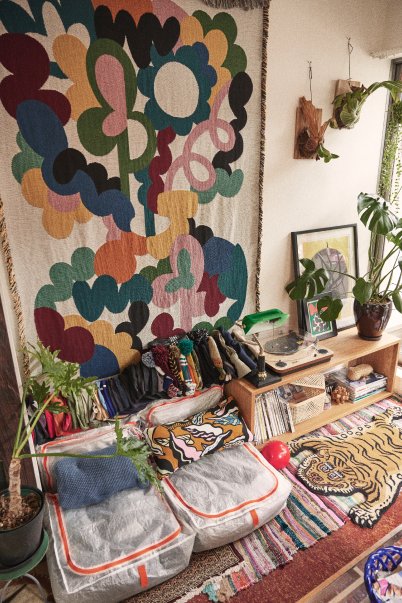Nida
Nida is a fashion designer residing in the hustle and bustle of vibrant New Delhi.
For Daisuke Hayashi, his studio apartment is an extension of his imagination and an embodiment of his personal style. Rather than simply furnishing the small space, he has transformed every square meter into a representation of himself, from the makeshift sofa he literally built out of IKEA PÄRKLA bags stuffed with his clothing, to his gallery of jerseys hung like paintings on the wall or his extensive hat collection – displayed around the room like decoration.
Measuring 29 square metres, the physical constraints of his home have taught him to create more space in less. A self-confessed collector of all things fashion, the abundant stores of vintage clothing, shoes, and magazines he brought with him when he moved in were obviously too much for the space – so he’s had to get creative.

“To me, a home is a place where I can express myself – it’s a place that shows my personality and my interests,” he says. “I can make my home into anything I want.”

“I wanted to put all my things in the closet in an organised way,” he recalls. “But as expected, that just wasn’t possible. So I’ve added things like shelves to put magazines in, and I bought open storage solutions that double as displays, so my belongings aren’t just stored away but rather used as decoration. Ideas like that have managed to make it all fit.”
Daisuke’s home isn’t just a place to relax and be creative: it’s also where he brainstorms ideas and creates content for his social-media platforms, and his studio set-up plays a significant role in the identity he has built online. Beyond using the space to present his gallery of collected items, he’s also made a conscious decision to be more attached to nature and to create a community of plants to come home to each day – so he’s filled his home to the brim with plants.
“When I’m creating content here, what I feel is helpful is how I have completely divided up the workspace and the relaxation space in the living room,” he explains. “By being conscious of the division of areas, I can manipulate the photos or videos when I’m shooting so that they focus on a certain area or present the display in a certain way.”


“When I’m creating content here, what I feel is helpful is how I have completely divided up the workspace and the relaxation space in the living room.”
Other than being creative with his space, he says that three needs are essential to him at home: comfort, a sense of belonging, and enjoyment. He finds comfort in the functionality of his living area, and in making it all work despite the tight quarters. His sense of belonging is increased by having created a home where he is truly able to be himself – and he feels enjoyment at home when he feels invigorated and inspired, both at the start and the end to every day. That feeling is tied closely to his ability to keep things organized and tidy. “
“In order to relax, a clean and tidy home is best for me,” he says. “To some extent, the state of my home reflects my mental state, it mirrors the state of my mind.”
While Daisuke values his privacy, he enjoys hosting close friends and family. He feels that if he had a larger home, he’d likely host more gatherings. In the future, he would be open to sharing his living space with someone; he knows this experience would likely involve compromise in terms of style and decoration, and possibly cleanliness – but it’s an experience he feels it is important to have, nevertheless.
Daisuke is at a crossroads concerning his collection. Although he would love to keep the passion alive and continue acquiring, he knows that the space he has now is essentially full. He aspires to have a bigger home one day, where he will have doubts about finding more special objects, clothing, and things he loves, and putting them on display for all to see.

